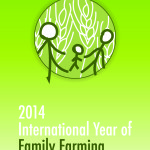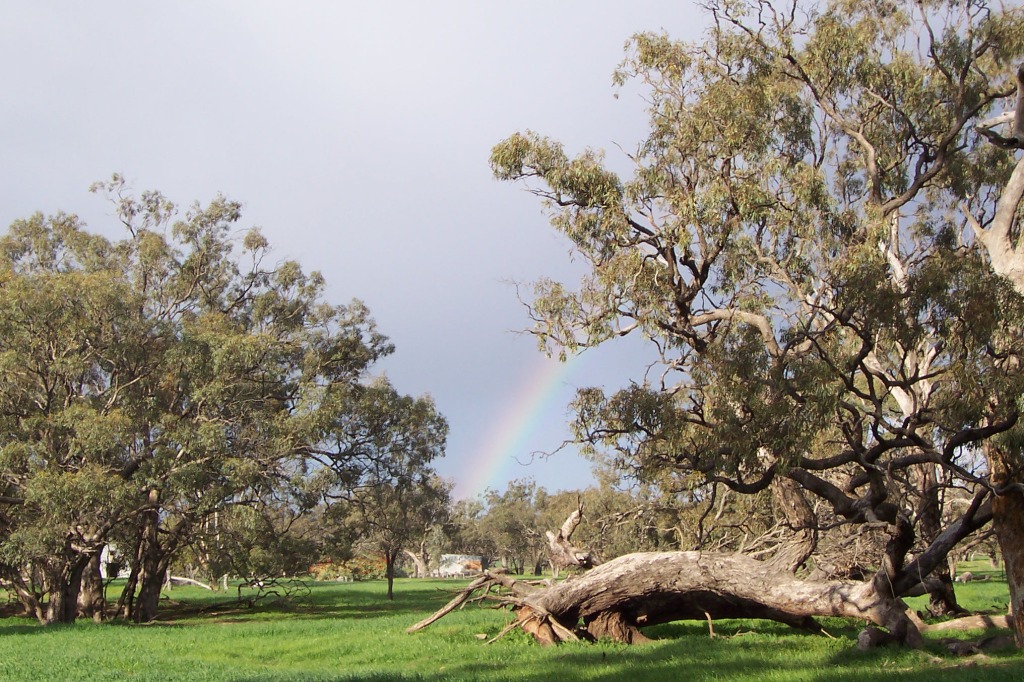This page provides an introduction to farms as an environment to learn about biodiversity. It provides an intoductory discussion about biodiversity and farm environments, links to detailed pages for examples of biodiversity on farms (still being added to) , and introduces the global and national years to which it is linked – 2011-2020 UN Decade of Biodiversity, 2014 International Year of Family Farming, 2012 Australian Year of the Farmer, 2012 National Year of Reading and support for National Science Week themes.
For teachers – This Biodiversity on Farms section could be used for the Australian Science Curriculum
Biology levels 1-7
the Nature and Development of Science levels 1-6.
(There are questions with the photos to aid this.)
What is biodiversity?
This page has photos to help you develop a definition of what Biodiversity means? It is clearly a part of Biological Sciences, but have you consdered ? Read 1 What should Biodiversity education do? and why? Can it be taught anywhere? I would argue it can if you start with right where you are 2 biodiversity ed out your window Can farmlands be used to about biodiversity? As an environmental educator, living on a farm, it certainly can 3 Farmlands for biod ed . As 2014 is the IY family farms, Feeding the World, Caring for the Earth, I am developing a new website with first hand experiences of family farms that could be used in Science, Geography and Literacy.
Do you only think of farms as places where the living things are food being grown?
Food from plants or animals?
Does an image of a farm give rise to other living things too?
Like what might be living in the land in this photo?
 I love living here, partly because of the living things with which we share this land. Where is it? This is the ‘dry’ Wimmera in winter. Where is the Wimmera? See map – The biodiversity in this website is from near Warracknabeal, in the north west region of Victoria.
I love living here, partly because of the living things with which we share this land. Where is it? This is the ‘dry’ Wimmera in winter. Where is the Wimmera? See map – The biodiversity in this website is from near Warracknabeal, in the north west region of Victoria.
Do you notice how living things change over time? We’ve seen lots of changes! The start of this 21st century has been really tough – the decade of drought, followed by 2010’s and 2011’s floods. Farmers have been growing food all through these changes – but the amount of food grown has varied a lot from year to year!
Some living things are here all the time. Others change with the seasons, or with the weather. Through it all farmers care for the living things on their properties – whether they are for food or the natural living things there. These natural living things provide much of the biodiversity on farmland.
Examples of living things on our farm
- The main big living thing on our farm is … the Big Trees – the grand old Black Boxes . On this page is how to identify a tree, with this example, and what are some things that live on it.
- The Wimmera is traditionally a ‘wheat- sheep’ growing area. In the last couple of decade that has become a wider variety of broad-acre crops. This is being developed for now.
- At the other end of the scale is the weeds, which need removing all year! In November 2012 I was working on one particular weed around our dam. I ended up respecting it greatly and was amazed at the ladybirds and mudeyes which used it. This page is a puzzle for you to work out what plant it is from the photos on the weed page pdf before you get to the end where the answer is revealed.
- I have often been fascinated by the bees here. During a very hot period, I was able to photograph European Honey bees drinking from a tap they made leak for their use! They didn’t seem to mind me at all.
Links to National and International Projects
So why make a website about what is living at our place? I like noticing living things and helping others to do that, so this website is being developed as a record to share our biodiversity with other people as a contribution to the UNDB, and to encourage people ot not just think of parks and zoos for seeing living things, but their homes and farms too.
Living things are very important to farmers and all of us. This website about living things on farms can also contribute to national and global projects:
- 2011-2020 – the world wide project- to take better care of living things (the United Nations Decade of Biodiversity. (UNDB) ).
 Farmlands can be a part of biodiversity experience and education.
Farmlands can be a part of biodiversity experience and education. - 2012 – the national project – to tell people know more about farming (Australian Year of the Farmer. (AYoF)).

- 2014 – the global project on the linked website – to share first hand experiences of people growing/catching their own food (International Year of Family Farming. IYFF )

I am developing a second website to focus on snapshots of family farms, hopefully from the world, to show what they are like, their families, their products and ways of caring for their Earth. These are in my family farms website. - 2012 – to provide new reading resources – for the national project on reading (National Year for Reading NYR) -really this goes for all projects
- National Science Week themes – this website has materials added for each of the NSWks
Move on to activity pages in my websites:
for learningabout biodiversity and environments ;
or to books that can be used for this;
or to the values of the trees of the Wimmera from the 2011 IY Forests project “pH, salinity and the trees”
or to the 2013 Maths of Planet Earth focussing on plants on streams
or to the 2014 IY family farms project
When farming is not sustainable, it will eventually collapse. Sustainability involves more than the biodiversity, so I have it in a different section.


